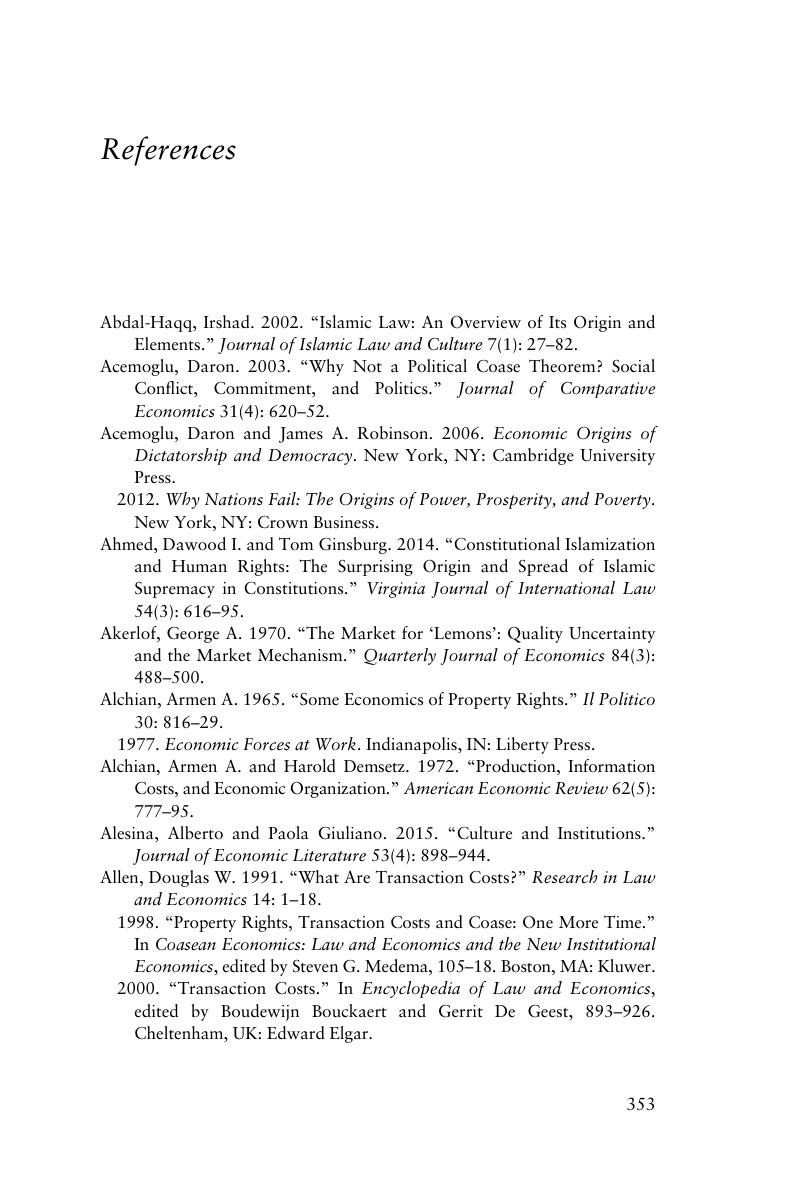Book contents
- Institutional and Organizational Analysis
- New Approaches to Economic and Social History
- Institutional and Organizational Analysis
- Copyright page
- Dedication
- Contents
- Figures
- Tables
- Acknowledgments
- Abbreviations
- Introduction
- Part I From Institutions to Economic Outcomes
- Part II From Economic Outcomes to Political Performance
- Part III The Dynamics of Economic and Political Development
- Conclusion
- References
- Index
- References
References
Published online by Cambridge University Press: 04 August 2018
- Institutional and Organizational Analysis
- New Approaches to Economic and Social History
- Institutional and Organizational Analysis
- Copyright page
- Dedication
- Contents
- Figures
- Tables
- Acknowledgments
- Abbreviations
- Introduction
- Part I From Institutions to Economic Outcomes
- Part II From Economic Outcomes to Political Performance
- Part III The Dynamics of Economic and Political Development
- Conclusion
- References
- Index
- References
Summary

- Type
- Chapter
- Information
- Institutional and Organizational AnalysisConcepts and Applications, pp. 353 - 384Publisher: Cambridge University PressPrint publication year: 2018



